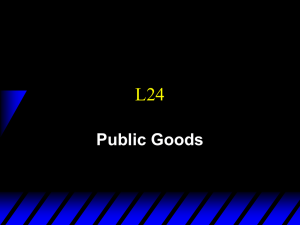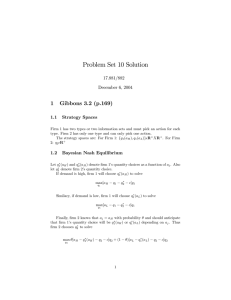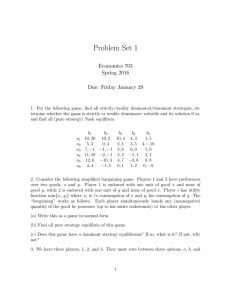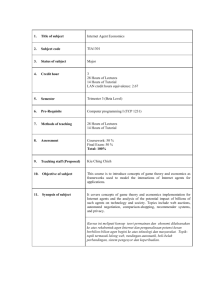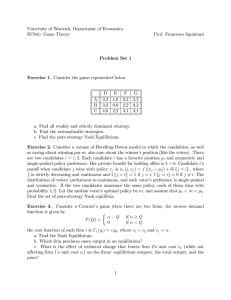Solution to exercise on the Downs model
advertisement
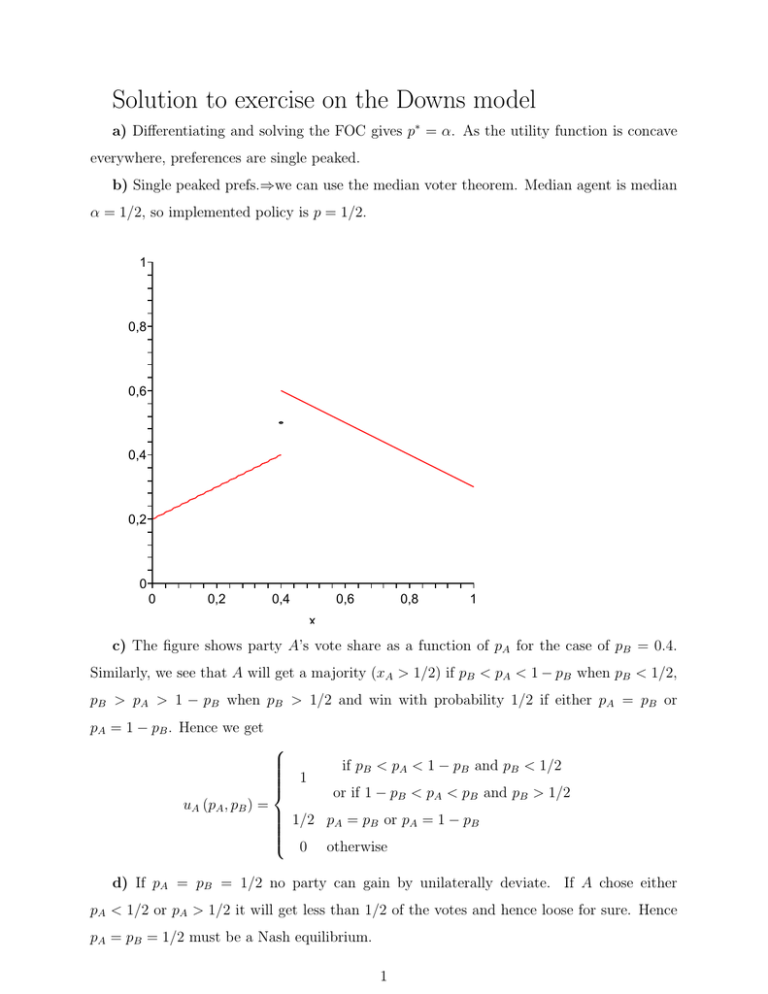
Solution to exercise on the Downs model a) Differentiating and solving the FOC gives p∗ = α. As the utility function is concave everywhere, preferences are single peaked. b) Single peaked prefs.⇒we can use the median voter theorem. Median agent is median α = 1/2, so implemented policy is p = 1/2. 1 0,8 0,6 0,4 0,2 0 0 0,2 0,4 0,6 0,8 1 x c) The figure shows party A’s vote share as a function of pA for the case of pB = 0.4. Similarly, we see that A will get a majority (xA > 1/2) if pB < pA < 1 − pB when pB < 1/2, pB > pA > 1 − pB when pB > 1/2 and win with probability 1/2 if either pA = pB or pA = 1 − pB . Hence we get uA (pA , pB ) = 1 if pB < pA < 1 − pB and pB < 1/2 or if 1 − pB < pA < pB and pB > 1/2 1/2 pA = pB or pA = 1 − pB 0 otherwise d) If pA = pB = 1/2 no party can gain by unilaterally deviate. If A chose either pA < 1/2 or pA > 1/2 it will get less than 1/2 of the votes and hence loose for sure. Hence pA = pB = 1/2 must be a Nash equilibrium. 1 e) There are two typos here: The utility function should be wA (p, xA , xB ) = − (p − ᾱA )2 + QvA (xA , xB ) (i.e. a minus and an over bar missing). Q is weight put on being in office relative to implementing favorite policy. pA = pB = 1/2 is still a Nash equilibrium. To see why, assume A deviates. Then they loose for sure, and implement policy is still 1/2. Hence for Q > 0 they are wore off. f ) To see pA = pB = pC = 1/2 is not an equilibrium, just notice that A can win almost 1/2 of the votes and win by choosing pA = 1/2 + ε for ε a tiny positive (or negative) number. g) If the utility is 1 for winning for sure etc., a possible Nash equilibrium is pA = 1/3, pB = pC = 2/3. Then A wins for sure. To see that this is a Nash equilibrium, notice first that A can’t do better by deviating. If B selects pB = 2/3 − ε for ε a small positive number, they loose all voters to the right of 2/3, and competes with A for the voters in [1/3, 2/3]. They will then get the voters in [1/2, 2/3], which is 1/6 of votes, and hence still lose for sure. By moving towards A, at some point C will take over as the winner, but nothing happens to Bs utility. By choosing pB = 2/3 + ε, they will also get a share slightly below 1/3 and still loose. Hence B cannot change its probability of winning by a unilateral deviation. The same holds for C, hence this is a Nash equilibrium. Notice that 1/3,2/3 is not the only combination where this holds. 2
